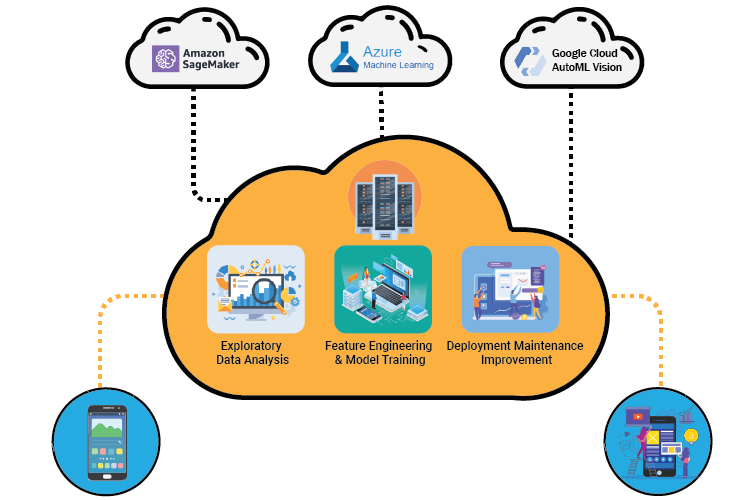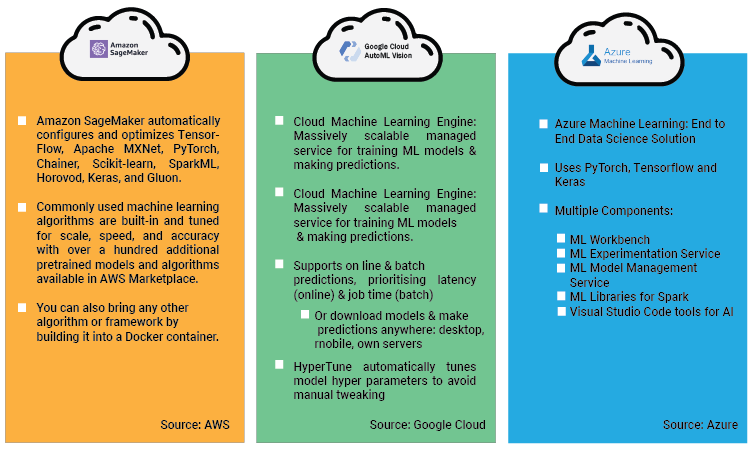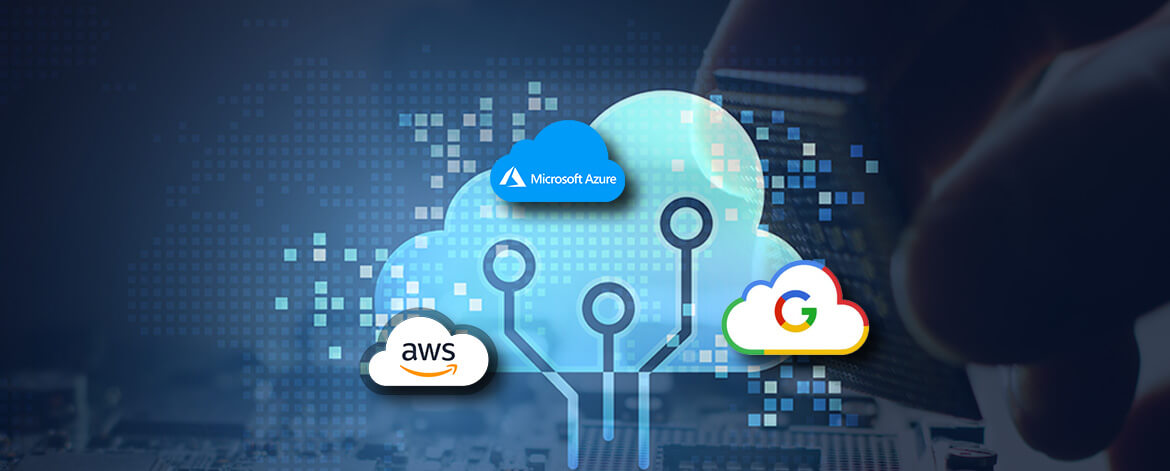Machine Learning has become a pioneer in the data-driven world. Most enterprises use Machine Learning and Data Analytics to better understand their target audience, automate some of their production, create better products according to market demand, improve business performance, etc. All of these things can lead to increased profitability and give them an edge over their competitors.
However, Machine Learning requires infrastructure, the right set of expertise, tools and technologies to build, test, and implement your ML algorithms from scratch and deploy. While many SMEs might not be familiar with the demands and requirements of a machine learning model deployment.
What is Machine Learning (ML) Deployment?
ML deployment means Machine-learning (ML) models are deployed to a production environment to generate business value. However, deploying to a production environment is a time-consuming process. At the same time, the successful deployment of models requires domain-specific knowledge to overcome new engineering and operational challenges.
ML deployment incorporates an ML model to a production environment keeping in mind the scalability, portability, and performance aspects of the model developed. It can be done by making use of the available methods like Batch Prediction or On-Demand Prediction and so on.
How Machine Learning Models are Deployed?
The general deployment for machine learning models will mainly consist of the below steps:
- Create and develop a model in a training environment
- Clean the code and test ready for deployment
- Prepare code for container deployment
- Plan and prepare for continuous monitoring and maintenance once machine learning deployment is successful

Getting machine learning applications into production can be tedious and hard.
To overcome these hassles, cloud computing comes to the rescue. Many cloud computing platforms are offering strong machine learning services and functionalities.
Microsoft, Google, and Amazon are most often named as Top MLaaS Providers. These cloud service providers help giants to SMEs enterprises that don’t want to build, test, and implement their machine learning algorithms from scratch. These companies can focus on their core business and obtain value addition from Machine Learning without needing to become experts.
Machine Learning Platforms and Frameworks
| Microsoft | AWS | ||
| Natural Language Processing | Azure Web Language Model API, Language Understanding Intelligent Service | Google Cloud Natural Language API, AutoML Natural Language | Amazon Comprehend |
| Speech Recognition | Azure Custom Speech Service, Speech to Text | Cloud Speech to Text API, Google DialogFlow | Amazon Transcribe |
| Computer Vision | Azure Custom Vision Service, Computer Vision | Google Cloud Vision API, AutoML Vision | Amazon Recognition |
| Artificial Intelligence | Azure Machine Learning Studio | Google Cloud Machine Learning Engine | Amazon SageMaker |
However, choosing a specific cloud platform requires due diligence and comparing each platform to fully understand its capabilities and differences.
Amazon Web Services (AWS)
AWS offers a wide range of tools and services for the ML objectives capable of leveraging the huge cloud compute and data capacity.
Amazon SageMaker: Amazon Web Services provides the Amazon SageMaker platform offering tools that enable developers and data scientists to easily build, train and deploy machine learning models at any scale. For instance, to simplify data exploration and analysis without server management hassle, it provides Jupyter, an authoring notebook.
The Built-in SageMaker methods provide the data scientists the ability to customize, add their methods, datasets and run models leveraging its deployment features. It also facilitates integration with TensorFlow, Keras, Gluon, Torch, MXNet, and many other machine learning tools and libraries.
Following are different ways in which ML models are trained and deployed using SageMaker:
- Create and deploy ML model inside SageMaker using SageMaker’s built-in algorithm containers
- Create your model and then deploy using SageMaker’s built-in algorithm containers (Bring Your Own Model type )
- Create a model outside SageMaker, bring your container inside SageMaker, and deploy it for usage
Azure ML (Azure ML Studio)
Microsoft Azure ML Studio is a web interface that provides a wide range of services to quickly build, train, and deploy machine learning models. It offers a drag-and-drop interface with simple modules for performing common functions like accessing data, cleansing data, scoring, testing models and deployment, etc.
It is designed in such a way that inexperienced developers and data scientists can easily train and deploy models without the complexity of managing cloud instances, Python coding, and Jupyter Notebooks. This accelerates the development and deployment of machine learning models.
The built-in modules help to preprocess the data to build and train ML/DL models using machine learning and deep learning algorithms such as recommendation systems, computer vision, anomaly detection, text analytics, etc.
Following are different ways in which ML models are trained and deployed using Azure ML:
- Development with a choice of tools: Work with Jupyter Notebook, drag-and-drop designer, and automated machine learning
- Create and deploy models at scale: using automated and reproducible machine learning workflows
- Innovate responsibly with a rich set of built-in responsible capabilities to help you understand, protect and control data, models, and processes
- Build your way along with the best-in-class support for the open-source frameworks and languages such as MLflow, Kubeflow, ONNX, PyTorch, TensorFlow, Python, and R

Google Cloud Auto ML
Google Cloud AutoML is a cloud-based ML platform to build data-driven solutions with a no-code approach. It can also suggest a set of prebuilt models via a set of APIs.
Cloud AutoML is a user-friendly platform allowing developers to high-quality models specific to business needs even with a limited machine learning experience. This tool enables the developers to access the research works of Google and tune their results to their own needs.
AutoML offers
- Sight: AutoML vision derives insights from images and AutoML Video Intelligence (Beta Version only) enables the powerful content discovery in videos.
- Language: AutoML Natural Language enables the build and deployment of custom machine learning models to analyze documents, categorize them, identify entities within them, or assess attitudes within them.
- Structured Data: AutoML Tables builds and deploy machine learning models on structured data.
Each of the three cloud platforms AWS, Azure and GCP are unique in their way and offer a plethora of options for organizations to select from based on their specific requirements. If you are still unsure about which cloud suits you best, our team of cloud engineering and machine learning experts can help. VOLANSYS provides cloud engineering services and machine learning services to Fortune 500 companies and emerging enterprises, delivering customized solutions that stood the test of time.
Read our success stories to know more about our AI/ML expertise.

About the Author: Himanshi shah
Himanshi is working with VOLANSYS as Senior Technical Lead. She has 10 yrs of experience in cloud, mobile, and web development. She is involved in managing and delivering customer solutions for cloud, android, iOS platforms, having exposure to various domains such as TTH, Publishing company, Media, Healthcare IoT.









